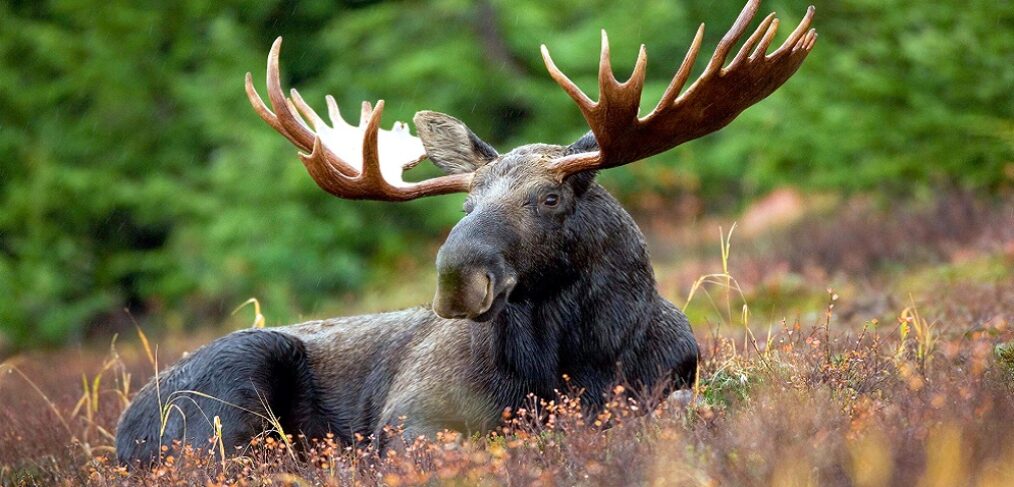
species of the week #91 – elk
For some years now, individual elks from Eastern Europe have been drawn to Germany. The living conditions are ideal – especially in sparsely populated Brandenburg with its wet meadows and moorland forests. Elks are very good swimmers and even venture into the Baltic Sea. Last year, for example, a moose visited the island of Usedom during the lockdown and took a walk on the deserted beach. On its way home, it was carefully escorted by the water police back to the Polish mainland.
| Distribution status in Germany | Threat with extinction |
| Remaining deposits | Scandinavia, Poland, Czech Republic |
| Last sighting in Germany | current |
| Habitat | Wetlands and forests |
| Threat | Urban sprawl, hunting |
Until the early Middle Ages, the imposing large deer were still widespread throughout Germany. In his “De Bello Gallico”, the Roman general Julius Caesar describes an alleged hunting method of the Germanic tribes: as the elk has no knee joints, it cannot stand up on its own and has to lean against a tree to sleep, Caesar writes. Germanic hunters would take advantage of this by sawing into the trees. If an elk leaned against the tree, it would fall to the ground with the tree and be hunted down. It has not been handed down who put this bear on Caesar.
Elks have knee joints, of course, but their legs seem very long and clumsy in relation to their bodies. Yet elks are real long-distance runners, but their running stamina is surpassed by their enthusiasm for the wet element: they spend about 60 percent of their life in the water. In the water, they could easily outrun any human Olympic champion, as they swim at speeds of up to 10 km/h. They can also sometimes be seen bathing with relish in warm springs, and they can swim up to six metres deep. In summer, they swim through the Oder and Neisse rivers; in winter, they simply walk across the ice and thus come to Germany from time to time. A gradually growing population also lives in the Czech Republic, from which individual animals undertake extensive migratory excursions to Bavaria.
Experts assume that the elks will be able to reestablish itself permanently in Germany in the near future. In suitable regions, far away from urban areas and with the beloved forest and water biotopes, the animals would find ideal living conditions. There are suitable areas not only in Brandenburg, but also in Saxony and Mecklenburg-Western Pomerania. In Bavaria, the Bavarian Forest and military training areas such as Grafenwöhr in the Upper Palatinate could be considered.
Since 2019, there has been the German-Polish Interreg research project “Elk Monitoring”, which is funded by the European Union. “We hope to gain further insights into the migratory behaviour of elks, for example also to prevent elk accidents.” Unfortunately, elks like the salt from the gritting services and like to roam along roads in winter. They also travel long distances during the rutting season. The bull elk, which otherwise live a rather secluded life, often wander thousands of kilometres in search of a female. Of course, they also cross country roads or motorways in the process. There are contradictory observations about their behaviour when handling cars. Some report a kind of paralysis of shock, like that of deer, while others warn of elk in full run, crossing roads with only their destination in mind. It is hoped that the monitoring will provide reliable information on behaviour and suitable protection measures so that the elk can soon return to Germany in good health.
Click here for many more exciting species of the week
Image: By Ryan Hagerty – http://www.public-domain-image.com/full-image/fauna-animals-public-domain-images-pictures/deers-public-domain-images-pictures/moose-and-elk-public-domain-images-pictures/a-male-moose-takes-a-rest-in-a-field-during-a-light-rainshower.jpg-public-domain-photo.html, Public domain, https://commons.wikimedia.org/w/index.php?curid=19998267
